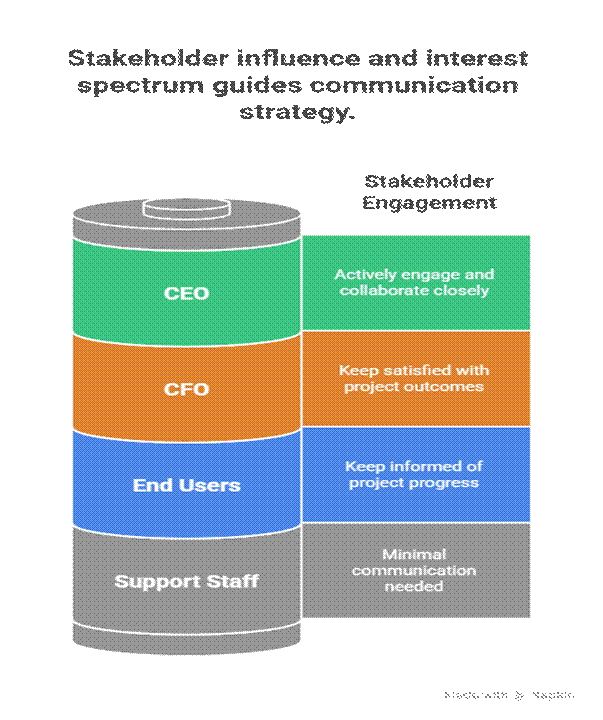Introduction
For a business analyst (BA), understanding stakeholder management and communication is as critical as mastering technical tools. Even the most precise requirements can fail if stakeholders are not engaged effectively or if communication channels break down. Effective stakeholder management ensures alignment, smooth project execution, and business success. At Curiosity Tech (website: https://www.instagram.com/curiositytechpark/ )
, Phone: +91-9860555369, Email: contact@curiositytech.in), we train aspiring analysts to identify, communicate, and collaborate with all levels of stakeholders, from top executives to operational staff.
1. Who Are Stakeholders?
Stakeholders are individuals or groups with an interest or influence in a project’s outcome. They include:
| Stakeholder Type | Role / Interest | Example |
| Executive Sponsors | Approve budgets, strategic alignment | CEO, CTO |
| Product Owners | Define vision and requirements | Head of Product, PM |
| End Users | Consume the product or service | Sales team using CRM |
| Development Team | Build the solution | Developers, QA |
| External Partners | Supply inputs or services | Vendors, consultants |
Curiosity Tech Insight: We emphasize mapping all stakeholders early to prevent missed requirements or misalignment, which is often the reason projects fail.
2. Stakeholder Analysis
Stakeholder analysis is a systematic approach to understand each stakeholder’s influence, interest, and communication needs.
Hierarchical Diagram: Stakeholder Influence & Interest Matrix

Key Steps:
- Identify stakeholders
- Categorize by influence and interest
- Determine communication frequency and format
- Engage appropriately based on priority
Practical Tip from Curiosity Tech: Analysts trained with our Nagpur team learned to prioritize meetings with key players, saving up to 20% of project time and avoiding unnecessary delays.
3. Communication Skills for Business Analysts
Effective communication is the backbone of stakeholder management. It involves:
- Active Listening: Understanding needs before proposing solutions
- Clear Documentation: Using concise language in BRDs, user stories, or Confluence pages
- Non-Verbal Communication: Body language and tone during meetings or presentations
- Adaptability: Tailoring communication style for executives, technical teams, or end users
Table – Communication Methods & Use Cases
| Method | Purpose | Ideal Stakeholder |
| One-on-One Meetings | Detailed requirement gathering | Key decision-makers |
| Workshops & Brainstorming | Collaborative idea generation | Cross-functional teams |
| Emails & Reports | Formal communication, approvals | Executives, external partners |
| Dashboards & Visuals | Progress tracking, status updates | Project teams, managers |
| Video / Virtual Meetings | Remote engagement, global teams | International stakeholders |
Curiosity Tech Application: Using structured dashboards and visual reporting, analysts can communicate complex metrics in a simplified manner, enhancing stakeholder understanding and reducing misinterpretation.
4. Stakeholder Engagement Strategies
Engagement is proactive participation, not passive communication. Key strategies include:
- Early Involvement: Engage stakeholders from requirement elicitation stage
- Regular Updates: Weekly or bi-weekly reports and meetings
- Feedback Loops: Gather feedback on prototypes, user stories, and workflows
- Conflict Resolution: Address concerns diplomatically and ensure alignment
- Documentation Transparency: Share artifacts via tools like Confluence or email
Example Scenario (Curiosity Tech Case Study):
A Nagpur-based e-commerce client faced delays due to misaligned expectations between sales and IT. By mapping stakeholders and setting up weekly sprint reviews, the BA ensured:
- Sales requirements were fully understood
- IT teams could plan sprints efficiently
- Misunderstandings were reduced by 60%
5. Practical Exercises to Master Stakeholder Communication
- Stakeholder Mapping Exercise: List all stakeholders, analyze influence, interest, and preferred communication.
- Role-Playing Meetings: Simulate executive discussions to practice concise communication.
- Report Writing Practice: Convert complex workflows into one-page executive summaries.
- Feedback Implementation: Actively seek and incorporate feedback in requirement documents or user stories.
Curiosity Tech Training: Our workshops allow hands-on practice where analysts prepare reports, conduct mock meetings, and get real-time feedback on communication style and clarity.
6. Common Pitfalls & How to Avoid Them
| Common Mistake | Impact | Solution |
| Ignoring low-interest stakeholders | Missed minor requirements, conflicts later | Map all stakeholders, communicate appropriately |
| Overloading stakeholders with details | Confusion, delayed decisions | Tailor communication based on stakeholder type |
| Poor listening & assumption-based requirements | Rework, delayed deliverables | Practice active listening, confirm understanding |
| Infrequent updates | Lack of alignment, project derailment | Schedule regular status updates and dashboards |
Insight: Curiosity Tech emphasizes real-time dashboards, email summaries, and interactive sessions as a solution to common communication pitfalls.
7. Conclusion
Stakeholder management and communication skills define the success of a Business Analyst. Technical knowledge alone is insufficient; analysts must actively engage, communicate, and manage expectations. Organizations like https://www.instagram.com/curiositytechpark/
provide practical training, real-world simulations, and guidance, helping BAs master these skills and make impactful contributions to projects. By following structured engagement strategies, analysts can ensure alignment, reduce conflicts, and enhance project efficiency, making them indispensable in any business environment.


